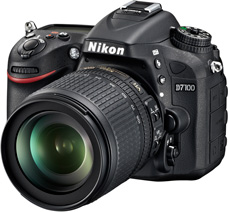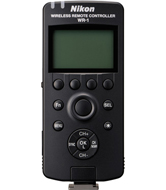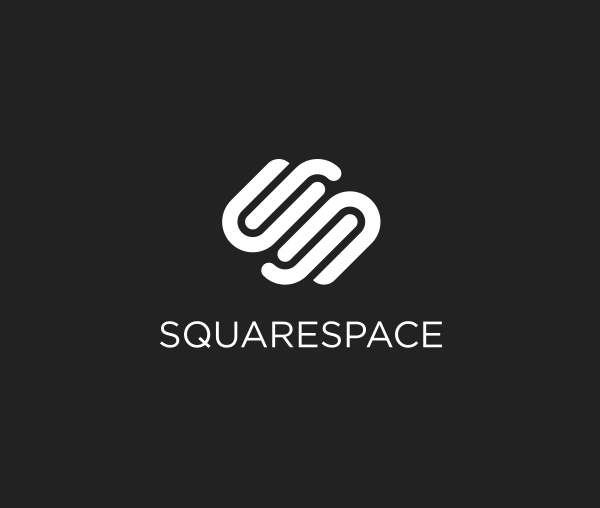The Nikon D7100 has been announced and will be available at the end of March. Pre-order now at Amazon | B&H Nikon D7100 First Impressions:The Nikon D7000 was a well loved and well priced camera. The Nikon D7100 looks to continue that trend - starting at a body only price of $1200 you get everything loved about the D7000 - handling, responsiveness, feature set and they have tacked on 51 AF points and a focusing brain borrowed from it's much bigger brother, the D4 as well as a host of other upgrades that make this a worth successor. The 24MP sensor is similar to what is used in the D5200 and that camera is capable of some stellar image/video quality from a crop sensor. However, the in the D7100 they have removed the Anti Aliasing(AA) filter which will increase the resolution further albeit at the expense of a bit more moire(rippled appearance on fine textures in stills and video) . With 6 FPS, 7 FPS at the 1.3x crop mode a large target audience for this camera is your sports and wildlife photographers, in addition when shooting in the crop mode almost the entire field is covered by a focus point. Movie options are robust and similar to the excellent options on the D5200 offering 1080i at 60fps. And a new OLED screen in the viewfinder, that's right, not the LCD but in the 100% glass pentaprism viewfinder we have additional information over-layed via an OLED screen. Overall this looks to be an excellent camera and a noticeable upgrade from the D7000 or one of the entry level Nikon cameras. If you have any questions about this camera or other Nikon DSLRS feel free to use the email link on the right or send me a message on Facebook. I answer your questions. Available to Preorder: Buy at Amazon | B&H (available at the end of March)Nikon D7100 specs:
Available to Preorder: Buy at Amazon | B&H (available at the end of March)Nikon D7100 specs:
- 24MP CMOS sensor
- 6fps (7fps at 1.3x Crop mode)
- 51 AF point, 15 cross-type, center type good to f/8
- 2016-pixel RGB sensor
- 3.2" 1,229k dots LCD screen
- Dual SD card slots
- EXPEED 3 processor
- ISO range: 100-6400
- Built-in HDR function
- 100% viewfinder coverage includes new OLED screen inside viewfinder
- Video: 1080p @ 60i/50i/30/25/24 fps plus 720p @ 60p
- Compatible with the WU-1a wireless mobile adapter
Gallery of ImagesPress Release:
Superior subject acquisition performance and sharp renderingAdvanced basic performance from features such as an AF system with 51 focus points, all in a compact, lightweight body
Tokyo - Nikon Corporation is pleased to announce the release of the advanced, high-performance DX-format D7100 digital SLR camera. The D7100 is a compact, lightweight camera (W x H x D: approx. 135.5 x 106.5 x 76 mm; weight: approx. 675 g*1) that offers superior portability. It is loaded with features that enable excellent subject acquisition and rendering performance capable of reproducing the finest details.The high density of 51-point AF system accurately acquires the intended subject for superior subject acquisition and tracking performance. Cross-type sensors have been adopted for the 15 most frequently used focus points at the center of the frame. In addition, the center focus point (cross-type) is fully functional with lenses with a maximum aperture of f/8. This means faster, more precise autofocusing with a variety of conditions. The D7100 is also equipped with a new crop image area, 1.3x DX crop, which increases the angle of view by approximately 1.3x that of the standard DX-format angle of view. This effectively increases lens focal length to an equivalent angle of view of approximately 2x*2, making distant subjects larger. In addition, the 51 focus points cover the entire image area when 1.3x DX crop is enabled for quick and certain acquisition of subjects moving randomly through the frame with high-speed continuous shooting at approximately 7 fps*3.The D7100 is also equipped with a DX-format CMOS sensor, an effective pixel count of 24.1-million pixels, the high-performance EXPEED 3 image-processing engine, and does not have an optical low-pass filter. These features enable excellent rendering with high resolution. The incredible potential of the high pixel count, high-definition D7100 can be maximized by the use of NIKKOR lenses, which offer superior rendering performance made possible with Nikon's own optical technologies.The D7100 also offers a number of new functions that improve operation and support more natural and efficient shooting, including Spot White Balance, a white balance Preset Manual option that allows users to choose a specific subject from which white balance is measured with shooting in live view. Additionally, the D7100 features an RGBW array that enables more effective accumulation of light, as well as a large, 3.2-inch high-resolution TFT LCD monitor with wide viewing angle, and an
The D7100 is a compact, lightweight camera (W x H x D: approx. 135.5 x 106.5 x 76 mm; weight: approx. 675 g*1) that offers superior portability. It is loaded with features that enable excellent subject acquisition and rendering performance capable of reproducing the finest details.The high density of 51-point AF system accurately acquires the intended subject for superior subject acquisition and tracking performance. Cross-type sensors have been adopted for the 15 most frequently used focus points at the center of the frame. In addition, the center focus point (cross-type) is fully functional with lenses with a maximum aperture of f/8. This means faster, more precise autofocusing with a variety of conditions. The D7100 is also equipped with a new crop image area, 1.3x DX crop, which increases the angle of view by approximately 1.3x that of the standard DX-format angle of view. This effectively increases lens focal length to an equivalent angle of view of approximately 2x*2, making distant subjects larger. In addition, the 51 focus points cover the entire image area when 1.3x DX crop is enabled for quick and certain acquisition of subjects moving randomly through the frame with high-speed continuous shooting at approximately 7 fps*3.The D7100 is also equipped with a DX-format CMOS sensor, an effective pixel count of 24.1-million pixels, the high-performance EXPEED 3 image-processing engine, and does not have an optical low-pass filter. These features enable excellent rendering with high resolution. The incredible potential of the high pixel count, high-definition D7100 can be maximized by the use of NIKKOR lenses, which offer superior rendering performance made possible with Nikon's own optical technologies.The D7100 also offers a number of new functions that improve operation and support more natural and efficient shooting, including Spot White Balance, a white balance Preset Manual option that allows users to choose a specific subject from which white balance is measured with shooting in live view. Additionally, the D7100 features an RGBW array that enables more effective accumulation of light, as well as a large, 3.2-inch high-resolution TFT LCD monitor with wide viewing angle, and an  button that enables direct access to frequently used functions.
button that enables direct access to frequently used functions.
- *1Camera body only
- *2Equivalent in 35-mm [135] format.
- *3When 1.3x DX crop is enabled; up to 6 fps when standard DX format is enabled. Both maximum frame rates possible only when image quality is set to JPEG/12-bit NEF (RAW). Measured according to CIPA guidelines.
D7100 primary features
- Support for lenses with a maximum aperture of f/8 and an AF system comprised of the high-density 51 focus points offering faster AF initiationThe 51 focus-point AF system built into the D7100 utilizes the new Advanced Multi-CAM 3500DX autofocus sensor module with 51 focus points covering a broad range of the frame for more certain acquisition of the intended subject. Cross-type sensors have been adopted for more certain acquisition and tracking of rapidly moving subjects. In addition, the camera is able to focus automatically with extreme accuracy, even in lighting measuring just −2 EV (ISO 100, 20°C), roughly equivalent to moonlight. What's more, the center focus point (cross-type) supports autofocusing with lenses with a maximum aperture of f/8. This allows users to enjoy ultra high-speed AF shooting with a compact and lightweight system when a telephoto NIKKOR lens with a maximum aperture of f/4 and a teleconverter (2x) are used.
- 51 focus points covering the entire frame bring distant subjects closer. 1.3x DX crop for high-speed continuous shooting at approximately 7 fps*1.The DX format effectively increases the shooting angle of view to an equivalent of approximately 1.5x the actual focal length of the lens*2. The new 1.3x DX crop image area increases this effect by an additional 1.3x for a total effective increase in angle of view to approximately 2x lens focal length*2, making distant subjects appear closer. What's more, when 1.3x DX crop is enabled, the AF system's 51 focus points cover the entire frame, and high-speed continuous shooting at approximately 7 fps*1 is possible for quick and certain capture of the intended subject.
- *1When 1.3x DX crop is enabled; up to 6 fps when standard DX format is enabled. Both maximum frame rates possible only when image quality is set to JPEG/12-bit NEF (RAW). Measured according to CIPA guidelines.
- *2Equivalent in 35-mm [135] format.
- A new Nikon DX-format CMOS sensor, an effective pixel count of 24.1-million pixels, no optical low-pass filter, and the EXPEED 3 image-processing engine optimized for high-performance digital-SLR camerasThe D7100 is equipped with a new Nikon DX-format CMOS sensor, an effective pixel count of 24.1-million pixels and no optical low-pass filter. It supports a broad range of standard ISO sensitivities, from ISO 100 to ISO 6400, as well as further expansion to an equivalent of ISO 25600 (Hi 2) for capture of sharp, clear images for which noise is effectively suppressed throughout the entire range of sensitivities. In addition, when used with NIKKOR lenses loaded with Nikon's advanced optical technologies, the D7100's high pixel count achieves sharp, well-defined rendering with a sense of depth. The EXPEED 3 high-performance image-processing engine maximizes the potential of the high pixel count for faithful reproduction of scenes.
- A compact and lightweight Nikon DX-format camera that is strong despite its light weight, and extremely portableDespite its advanced basic performance and being loaded with a number of new functions, the D7100 is a compact, lightweight camera measuring approximately 135.5 mm wide, 106.5 mm high and 76 mm deep, and weighing just 675 g*. As an entire system, the Nikon DX format, which includes DX-format lenses, offers excellent portability. The magnesium alloy adopted for the top and rear covers of the D7100 ensures great strength, and sealing of individual components ensures a high level of water and dust resistance. These aspects make the D7100 the perfect camera for a broad range of uses, from casual capture of everyday scenes to full-scale photography.
- Increased usability and improved operation
- A new
 button enables quick access to frequently used camera functionsA new
button enables quick access to frequently used camera functionsA new  button, positioned to the bottom left of the camera's monitor, enables simple access to frequently used functions with viewfinder and live view photography, movie recording, and playback. Pressing the
button, positioned to the bottom left of the camera's monitor, enables simple access to frequently used functions with viewfinder and live view photography, movie recording, and playback. Pressing the  button displays the options screen for the desired setting, allowing immediate access to setting options for normal shooting, live view photography, and the retouch menu in playback mode.
button displays the options screen for the desired setting, allowing immediate access to setting options for normal shooting, live view photography, and the retouch menu in playback mode.
- A new Spot White Balance option for measuring white balance using a specified portion of the frameWith live view photography, preset manual white balance data can be easily acquired based on a portion of the scene selected by the user. Spot White Balance eliminates the need to prepare a reference object, such as a gray card, and allows for preset white balance measurement without changing lenses when a super-telephoto lens is used.This new option is most convenient with outdoor shooting, and sports and landscape photography.
- A high-performance optical viewfinder utilizing a glass pentaprism and offering frame coverage of approximately 100%The optical viewfinder built into the D7100 offers frame coverage of approximately 100% for extremely precise framing of images, and magnification of approximately 0.94x* that makes all elements in the viewfinder display easy to see. Adoption of a very bright, high-contrast, low power consumption OLED display element ensures excellent visibility even in low temperatures.
- OLED display elementAdoption of a very bright, high-contrast, low power consumption OLED display element ensures faster viewfinder display ((information display below image area) with excellent visibility even in low temperatures.
- 3.2-inch, 1229 k-dot TFT LCD monitor with wide viewing angle utilizing a new RGBW arrayThe D7100 is equipped with a large, high-definition TFT LCD monitor with wide viewing angle for which an RGBW array that increases brightness has been adopted. This increases visibility with viewing in bright surroundings.
- *With 50mm f/1.4 lens at infinity, -1.0 m-1.
- Support for 1920 x 1080/60i and 1920 x 1080/30p movie recordingThe combination of NIKKOR lenses, an imaging unit that does not include an optical low-pass filter, and the EXPEED 3 image-processing engine enables sharp, high-resolution imaging expression with movie recording as well. The Multi-area mode Full-HD D-Movie function supports movie recording using not only the standard DX-movie image area, but also the new 1.3x DX crop image area. The 1.3x DX crop option brings distant subjects closer with movie recording. In addition, the stereo microphone built into the pentaprism enables recording of high-quality stereo sound. The D7100 also supports recording of stereo sound via connection of the optional ME-1 stereo microphone.
- Support for the new WR-1 Wireless Remote Controller(available separately)
 The D7100 supports the WR-1, a highly functional transceiver that enables verification and adjustment of settings*1, as well as control over remote shooting. The WR-1 uses radio waves and supports 15 channels for communication over a maximum range of 120 m*2 between multiple WR-1s. Not only can one WR-1 be configured as a transmitter and a second as a receiver*3 to control operation of one remote camera, but multiple WR-1s can be configured as receivers for remote control over multiple cameras. A number of remote shooting options are available, including simultaneous release and synchronized release*4, as well as interval timer shooting and division of multiple cameras into groups for separate control over each group. Remote control is also possible using the WR-R10/WR-T10 combination.
The D7100 supports the WR-1, a highly functional transceiver that enables verification and adjustment of settings*1, as well as control over remote shooting. The WR-1 uses radio waves and supports 15 channels for communication over a maximum range of 120 m*2 between multiple WR-1s. Not only can one WR-1 be configured as a transmitter and a second as a receiver*3 to control operation of one remote camera, but multiple WR-1s can be configured as receivers for remote control over multiple cameras. A number of remote shooting options are available, including simultaneous release and synchronized release*4, as well as interval timer shooting and division of multiple cameras into groups for separate control over each group. Remote control is also possible using the WR-R10/WR-T10 combination.
- *1Some functions excluded.
- *2At an altitude of approximately 1.2 m; effective range may be reduced by obstacles and inclement weather.
- *3Pairing required for all WR-1, WR-R10, and WR-T10 units. Up to 20 WR-1units can be paired, up to 64 WR-R10 units can be paired.
- *4Only cameras with a ten-pin remote terminal can be employed as master cameras with synchronized release.
Other D7100 Features
- Release time lag of approximately 0.052 s*1high-speed continuous shooting at up to approximately 7 fps*1*2
- Extremely durable shutter that has passed testing for 150,000 cycles
- Built-in flash equipped with a commander function
- Double slots for SD memory cards
- New Multi-Power Battery Pack MB-D15 (available separately)
- *1Measured according to CIPA guidelines.
- *2When 1.3x DX crop is enabled; up to 6 fps when standard DX format is enabled. Both maximum frame rates possible only when image quality is set to JPEG/12-bit NEF (RAW).
 What you need to know about the Nikon D7200:
What you need to know about the Nikon D7200:


 My quick thoughts on the Nikon D7200I was a fan of the D7100, it provides excellent manual controls and very good quality at a solid price. The value of the camera was high. I, like many photographers, were frustrated with the tiny buffer that really kept this camera from shining, it certainly made sports and wildlife photographers look for alternatives. It looks like they have addressed that issue and I expect this camera to perform well and sell well.Nikon D7100 and D7200 - Can you tell the difference?[vc_row][vc_column width="1/2"]
My quick thoughts on the Nikon D7200I was a fan of the D7100, it provides excellent manual controls and very good quality at a solid price. The value of the camera was high. I, like many photographers, were frustrated with the tiny buffer that really kept this camera from shining, it certainly made sports and wildlife photographers look for alternatives. It looks like they have addressed that issue and I expect this camera to perform well and sell well.Nikon D7100 and D7200 - Can you tell the difference?[vc_row][vc_column width="1/2"] [/vc_column][vc_column width="1/2"]
[/vc_column][vc_column width="1/2"] [/vc_column][/vc_row]
[/vc_column][/vc_row]

 The Nikon D5500 is now available and shipping (with expedited shipping) fromBuy from
The Nikon D5500 is now available and shipping (with expedited shipping) fromBuy from  Key Differences between all three cameras - If a camera is not listed with a feature bullet it does not offer that feature.
Key Differences between all three cameras - If a camera is not listed with a feature bullet it does not offer that feature.
 Available to Preorder: Buy at
Available to Preorder: Buy at  The D7100 is a compact, lightweight camera (W x H x D: approx. 135.5 x 106.5 x 76 mm; weight: approx. 675 g*1) that offers superior portability. It is loaded with features that enable excellent subject acquisition and rendering performance capable of reproducing the finest details.The high density of 51-point AF system accurately acquires the intended subject for superior subject acquisition and tracking performance. Cross-type sensors have been adopted for the 15 most frequently used focus points at the center of the frame. In addition, the center focus point (cross-type) is fully functional with lenses with a maximum aperture of f/8. This means faster, more precise autofocusing with a variety of conditions. The D7100 is also equipped with a new crop image area, 1.3x DX crop, which increases the angle of view by approximately 1.3x that of the standard DX-format angle of view. This effectively increases lens focal length to an equivalent angle of view of approximately 2x*2, making distant subjects larger. In addition, the 51 focus points cover the entire image area when 1.3x DX crop is enabled for quick and certain acquisition of subjects moving randomly through the frame with high-speed continuous shooting at approximately 7 fps*3.The D7100 is also equipped with a DX-format CMOS sensor, an effective pixel count of 24.1-million pixels, the high-performance EXPEED 3 image-processing engine, and does not have an optical low-pass filter. These features enable excellent rendering with high resolution. The incredible potential of the high pixel count, high-definition D7100 can be maximized by the use of NIKKOR lenses, which offer superior rendering performance made possible with Nikon's own optical technologies.The D7100 also offers a number of new functions that improve operation and support more natural and efficient shooting, including Spot White Balance, a white balance Preset Manual option that allows users to choose a specific subject from which white balance is measured with shooting in live view. Additionally, the D7100 features an RGBW array that enables more effective accumulation of light, as well as a large, 3.2-inch high-resolution TFT LCD monitor with wide viewing angle, and an
The D7100 is a compact, lightweight camera (W x H x D: approx. 135.5 x 106.5 x 76 mm; weight: approx. 675 g*1) that offers superior portability. It is loaded with features that enable excellent subject acquisition and rendering performance capable of reproducing the finest details.The high density of 51-point AF system accurately acquires the intended subject for superior subject acquisition and tracking performance. Cross-type sensors have been adopted for the 15 most frequently used focus points at the center of the frame. In addition, the center focus point (cross-type) is fully functional with lenses with a maximum aperture of f/8. This means faster, more precise autofocusing with a variety of conditions. The D7100 is also equipped with a new crop image area, 1.3x DX crop, which increases the angle of view by approximately 1.3x that of the standard DX-format angle of view. This effectively increases lens focal length to an equivalent angle of view of approximately 2x*2, making distant subjects larger. In addition, the 51 focus points cover the entire image area when 1.3x DX crop is enabled for quick and certain acquisition of subjects moving randomly through the frame with high-speed continuous shooting at approximately 7 fps*3.The D7100 is also equipped with a DX-format CMOS sensor, an effective pixel count of 24.1-million pixels, the high-performance EXPEED 3 image-processing engine, and does not have an optical low-pass filter. These features enable excellent rendering with high resolution. The incredible potential of the high pixel count, high-definition D7100 can be maximized by the use of NIKKOR lenses, which offer superior rendering performance made possible with Nikon's own optical technologies.The D7100 also offers a number of new functions that improve operation and support more natural and efficient shooting, including Spot White Balance, a white balance Preset Manual option that allows users to choose a specific subject from which white balance is measured with shooting in live view. Additionally, the D7100 features an RGBW array that enables more effective accumulation of light, as well as a large, 3.2-inch high-resolution TFT LCD monitor with wide viewing angle, and an  button that enables direct access to frequently used functions.
button that enables direct access to frequently used functions.
 The D7100 supports the WR-1, a highly functional transceiver that enables verification and adjustment of settings*1, as well as control over remote shooting. The WR-1 uses radio waves and supports 15 channels for communication over a maximum range of 120 m*2 between multiple WR-1s. Not only can one WR-1 be configured as a transmitter and a second as a receiver*3 to control operation of one remote camera, but multiple WR-1s can be configured as receivers for remote control over multiple cameras. A number of remote shooting options are available, including simultaneous release and synchronized release*4, as well as interval timer shooting and division of multiple cameras into groups for separate control over each group. Remote control is also possible using the WR-R10/WR-T10 combination.
The D7100 supports the WR-1, a highly functional transceiver that enables verification and adjustment of settings*1, as well as control over remote shooting. The WR-1 uses radio waves and supports 15 channels for communication over a maximum range of 120 m*2 between multiple WR-1s. Not only can one WR-1 be configured as a transmitter and a second as a receiver*3 to control operation of one remote camera, but multiple WR-1s can be configured as receivers for remote control over multiple cameras. A number of remote shooting options are available, including simultaneous release and synchronized release*4, as well as interval timer shooting and division of multiple cameras into groups for separate control over each group. Remote control is also possible using the WR-R10/WR-T10 combination.



